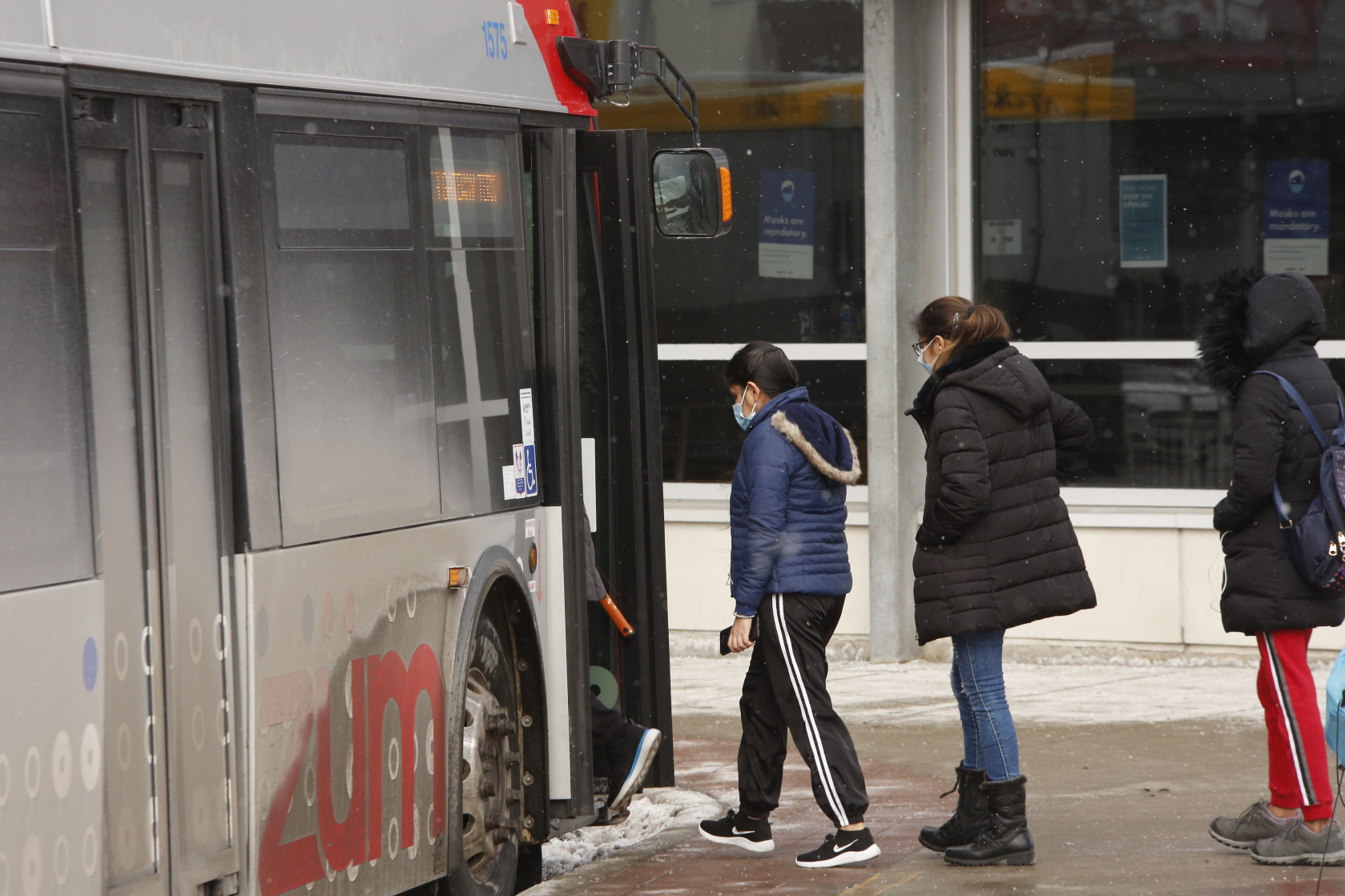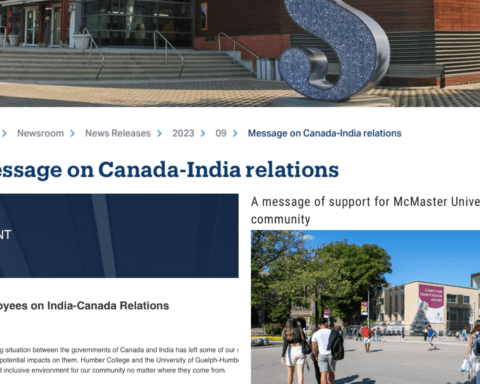Sylvia Roberts is an influential Brampton activist. Known as @BramRecorder on Twitter, she keeps a watchful eye on every spasm and convulsion of the city. She attends city council meetings religiously and takes a fine-tooth comb to the most minor details of policy. She has leveraged this into a seat on the city’s Transit Advisory Committee.
Roberts started to study “the city in general” in early 2018. She began live-tweeting from council meetings in January of the same year. From there she “gradually gravitated to transit and housing because those were the two big issues in Brampton.”
She was born in the United States to a South Asian mother, from Brampton, and a white father. One of the first challenges her family dealt with when moving from the U.S. to her mother’s hometown was “that car insurance is truly and absurdly expensive. As in from where I had moved from, the car insurance for the same driver, same car, was five times as much … So, by taking transit, it made an enormous difference to our household budget.”
Bramptonians pay the highest car insurance premiums in Ontario. This underscores the importance of transit to Roberts and many immigrants in a similar situation.
Transit system that’s “consistently busy”
All things considered, Brampton Transit’s ability to provide timely and thorough service to the public has been a success story. Ridership growth has been strong in the past four years and remained strong in 2020 despite a major drop over the summer caused by COVID-19 restrictions.
“The uptick of ridership has really surpassed the actual population growth,” Brampton Transit’s general manager Alex Milojevic told NCM. “If you look at the last decade, you probably had approximately 160 per cent increase in ridership with a population increase of around 30 per cent.” Milojevic appears to be on the mark. Brampton’s population in 2010 was 526,980, and by the second quarter of 2020, it was 664,980, a 26 per cent increase. In roughly the same time period, ridership went from a total of 12.2 million in 2009 to 31.9 million in 2020, a 160 per cent increase.
But the city’s explosive growth, much of it directly resulting from immigration, means that there is a real danger of demand outstripping supply.
Sylvia Roberts believes the city is currently in that dire situation. After she was appointed to the transit committee, Roberts would go to the Brampton Gateway Terminal “frequently, all times of day.” She saw that it was “consistently busy.”
“When they reduced capacity, there were cases of people waiting an hour or more in lines for the bus, wrapping around the terminal building,” she said. She also observed similar patterns before the COVID-19 pandemic.
Between 2016 and 2018, when ridership grew by 47 per cent, Roberts saw that “many of the routes were incredibly over-capacity. There were people who were losing jobs because they were trying to get to work and they were passed by three full buses.”
In 2015, the City of Brampton updated its Transportation Master Plan, its blueprint for the future of transportation. It paints a picture of massive population growth thanks to the city’s large intake of immigrants and other types of newcomers. The city expects the population to grow by 375,600 people between 2011 and 2041 (from 523,900 to 899,500).
The stakes are clear. If the city did not account for this growth in its transportation plan, there would be “serious ramifications for travel times and costs of congestion,” the authors wrote in the report. “Under this scenario, average auto trip times would skyrocket from 27 minutes presently to 82 minutes. The percentage of travel on congested lanes would rise from 17 per cent today to 65 per cent. The annual cost of congestion would exceed $2 billion. Clearly, transportation investment is needed to keep Brampton moving.”
Transportation as immigration policy
Traffic snarls, which are already pretty bad in Brampton, social isolation and employment inaccessibility are what Brampton’s immigrant community is in for. Bramptonians, more than half of whom were born outside of Canada, need ways to get to work, to the grocery store and access government services. Public transit in Brampton is an immigration policy issue.
But the explosive population growth of the city means that Brampton Transit and the municipal government are always looking to the future. High-order transit (sometimes called rapid transit) has been on the lips of the government and the public for years. It is a type of transit configuration, like subways and Light Rail Transit (LRT), where the mode of transportation is separate from car traffic.
Yet the LRT has so far been out of reach of Bramptonians. In 2015, after a route was decided on along Main Street, the road that goes directly in front of City Hall, the motion was narrowly defeated in a city council vote. Detractors cited lack of economic viability and a belief that the LRT was out of place in the charming, rustic heritage district just south of City Hall.
The project was revived in 2018. This time, the councillors agreed on the Main Street route but clashed over whether it should run underground or on street level. As a result, the city is no closer to getting high-order transit.
The province of Ontario has long been aware of the need to expand the transit system in the Greater Toronto and Hamilton Area (GTHA). In September 2013, the Provincial Liberal government released The Big Move, the province’s vision for transit growth in the GTHA. The report stated that the transportation system was already approaching design capacities. The proposed solutions included reducing the average distance travelled by car from 26 km to 19 km, increasing the percentage of people who live near rapid transit from 42 per cent to 81 per cent, and increasing annual transit ridership from 546 million to 1.2 billion.
The example of Waterloo
The government that most likely best understands the need for robust transit is the Region of Waterloo. In the spring of 2019, the authorities officially opened their LRT service called the Ion Rapid Transit.
Waterloo Regional Councillor Tom Galloway, who led the charge in pursuit of the Ion, told NCM that population growth was the reason why his government went for it. The idea was born when “the province told us we need to plan for another 250,000 residents over the next 30 years,” he said. “So we created a strategy on how we are going to house and accommodate all these new residents.”
When Galloway says the province told his government to plan for growth, he is referring to “A Place to Grow” master plan. It is a provincial document calling on municipalities to implement policies related to growth. It calls for greater density in specific areas of Ontario’s largest municipalities, called Urban Growth Centres.
For Waterloo Region, transportation policy and housing policy are inextricably married together. The authorities used the Ion, Galloway said, for “intensifying our existing neighbourhoods … so the real genesis of our LRT was really (as) a planning tool.”
When an immovable transit system is placed in a part of the city, the land immediately around it becomes very valuable to developers. They rush in to seek building permits and capitalize on the public demand for living near a modern mode of transit. Through this strategy, Kitchener-Waterloo’s housing stock was completely reconfigured. While in 2002, more than three quarters of all development was low-density single-family homes, as of 2015, close to 70 per cent of all housing in the area are high-rise buildings.
That isn’t to say that Brampton is not following suit. The city is in the process of rezoning an area just east of downtown, called the Queen Street Corridor, a part of the city designated as an Urban Growth Centre by the province. The area is dominated by typical single-family homes, with some high-rises along Queen Street and drab strip malls. The city is hoping that high-order transit, most likely Bus Rapid Transit, will reinvigorate the area.
If what Galloway says is true, that rapid transit is a planning tool that incentivizes development, then it could very well be that Brampton’s fortunes might begin to turn.
Mansoor Tanweer is New Canadian Media’s Local Journalism Initiative reporter on immigration policy. An immigrant himself, he has covered municipal affairs and the Brampton City Council in addition to issues relating to newcomers over several years.





